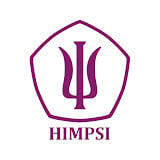Persepsi Masyarakat Terhadap Bencana (Mass Perception Of Disaster)
Abstract
Keywords
Full Text:
PDFReferences
Abdullah, I. (2006). Dialektika Natur, Kultur, dan Struktur: Analisis Konteks, Proses, dan Ranah dalam Konstruksi Bencana, Pidato Pengukuhan Jabatan Guru Besar Antropologi, Fakultas Ilmu Budaya Universitas Gadjah Mada: Yogyakarta.
Ahimsa, P.H.S. (1994). “Bencana Merapi: Politik Tafsir dan Tafsir Politik” disampaikan dalam seminar ‚Korban Bencana Merapi dan Solidaritas Sosial: Interpretasi Antropologis”. Fakultas Sastra UGM: Yogyakarta.
Ahimsa, P.H.S. (2011). ‚Etno-Bencana-Etnosains untuk Kajian Bencana‛ dalam makalah yang disampaikan pada Konferensi dan Presentasi Hasil Penelitian ‚Menuju Masyarakat Siap Bencana‛ Pasca Sarjana dan Centre Religious & Cross-Cultural Studies (CRCS) Universitas Gadjah Mada: Yogyakarta
Bagus, L. (2000). Kamus Filsafat, Jakarta: PT Gramedia Pustaka Utama.
Blaikie, P. (2002). ‚Vulnerability and Disaster‛ dalam Desai & Potter (ed) The Companion to Development Studies. Arnold: London.
Brown, L. R. (1987), Dunia Penuh Ancaman, Yayasan Obor Indonesia: Jakarta.
Capra, F. 1996, The Web of Life, Free Press: London
Capra, F. (1997). Titik Balik Peradaban, Translasi Indonesia, Kreasi Wacana: Yogyakarta.
Caputo. (1987). Radical Hermeneutics, Indiana University Press: Bloomington.
Creswell, J.W. (1998) Qualitative inquiry and research design choosing among five tradition. SAGE Publications: London.
Creswell, J.W. (2009) Research designe qualitative, quantitative, and mixed methods approaches. (Third Edition), SAGE Publications: California.
Danesi, M. (2008). Popular Culture: Introductory Perspectives, Rowman & Littlefield Publishers, INC, USA.
Delfgauw, B. (2001). Filsafat Abad 20 (terj. Soejono Soemargono), Tiara Wacana: Yogyakarta.
Descartes, R. (1960). Discourse on Methode, J.M. Dent & Sons Ltd: London.
Diamond, J. (2006). Collapse: How Societies Choose to Fail or Survive, Penguin Books: London.
Dibyasuharda, (1990). Dimensi Metafisika dalam Simbol, Disertasi pada Program Doktor Fakultas Filsafat UGM, Yogyakarta.
Douglas J Den U & Douglas B R. (1986). The Philosophic Thought of Ayn Rand, Illini Book edition, University of Illinois, USA. New York
Dreyfus, H. L. (1992). Being-In-The-World: A Commentary on Heidegger’s Being and Time, MIT Press: Massachusets.
Eliade, M. (1987). ‚The Sacred and the Profane” Harcourt Brace & Company: New York
Friedman, M. (2002). Capitalism and Freedom, London: The University of Chicago press, ltd.
Freud, S. (2005). Civilization and Its Discontents, translate by Louis Menand, London: W. W. Norton & Company.
Gore, A. A. (2007). An Inconvenient Truth, Rodale: New York.
Hady & Ronny, (2010). Manajemen Bencana: Respons dan Tindakan Terhadap Bencana, Yogyakarta: MedPress.
Heidegger, M. (1962). Being and Time (terj. John Macquarrie & Edward Robinson), Harper & Row Publishers: New York.
Heilbroner, R.L., 1991, Hakikat dan Logika Kapitalisme, (terjemahan), LP3ES: Jakarta.
Imron, A & Hidayat (2011), ‚Dari sabar hingga getok tular: Kekuatan Agama dan Kearifan Lokal dalam Proses Kebangkitan Masyarakat Yogyakarta Pasca Gempa (studi dengan pendekatan hermeneutika fenomenologi di Kasongan Bantul Yogyakarta)‛ dalam makalah yang disampaikan pada Konferensi dan Presentasi Hasil Penelitian di UGM: Yogyakarta.
Jary, D & Julia. (1991). ‚Harper Perennial‛ The Harper Collins Dictionary of Sociology: New York. USA
Keraf, S. A (2010). Krisis dan Bencana Lingkungan Hidup Global, Kanisius, Yogyakarta.
Klein, N. (2008). The Shock Doctrine: The Rise of Disaster Capitalism, Canada: Vintage.
Kuntowijoyo, (2000). Mantra Pejinak Ular, Jakarta: Gramedia.
Kuswanjono, A. (2011). ‚Bencana dalam Perspektif Filsafat Moral‛ dalam makalah Konferensi dan Presentasi Hasil Penelitian ‚Menuju Masyarakat Siap Bencana‛ Pasca Sarjana dan Centre Religious & Cross-Cultural Studies (CRCS) Universitas Gadjah Mada: Yogyakarta.
Lerner, R.E. (1988). Western Civilization, Volume 2, W.W. Norton & Company, Ney York-London.
Malinowski, B. (1954). ‚Magic, Science, and Religion‛ Doubleday & Company, Inc: New York
Maslow, A. (1987). Motivation and personality, Harper an Row, New York.
Minsarwati, W. (2002). Mitos Merapi dan Kearifan Ekologi, Kreasi Wacana: Yogyakarta
Mudhofir, A. ( 2001). Kamus Filsuf Barat, Pustaka Pelajar: Yogyakarta.
Oliver, S. (2002). “Theorizing Disasters: Natur, Power, and Culture“ dalam S.M. Hoffman dan A. Oliver-Smith (ed), Catastrophe and Culture: The Anthropology of Disaster, santa Fe: School of American Research Press.
Pettiford, L. (1995). “Towards a Redefinition of Security in Central America: The Case of Natural Disaster‛, Disasters Journal, Vol. 19. No. 2.
Poesporodjo, W. (1987). Interpretasi, Beberapa catatan pendekatan filsafatinya, Remadja Karya: Bandung.
Quarantelli, E, L. (1998). What is Disaster?: Perspective On the Question, London: Routledge.
Richardson, W. (1974). Heidegger: Through Phenomenology to Thought, The Hague, Netherlands: Martinus Nijhoff.
Sabir, A. (2007). Metafisika Heidegger dalam Konteks “Being and Time”, Skripsi pada Fakultas Filsafat UGM, Yogyakarta.
Sabir, A (2011). Metafisika Bencana, Tesis pada Fakultas Filsafat UGM: Yogyakarta
Sabir & Heru, 2010, Gempita Pencarian Tuhan di Tengah Kota, Jurnal Perempuan Srhintil, Desantara, Jakarta.
Sheehan, T. (1981). Heidegger: The man & The Thinker, Precedent Publishing: Chicago.
Sill, D. L. (1972). International Encyclopedia of the Social Sciences, The Macmillan Company & The Free Press: New York
Siswanto, J (1998). Sistem-sistem Metafisika Barat: dari Aristoteles sampai Derrida, Pustaka Pelajar: Yogyakarta.
Sontag, F. (2001). Pengantar Metafisika (terj. Cuk Ananta), Pustaka Pelajar: Yogyakarta.
Tuan, Yi, Fu (1998). Escapism, USA : Johns Hopkins University Press.
Undang-Undang Negara Republik Indonesia No. 24 tahun 2007
Wajih, A. W. (2009). ‚Pertanian Adaptif di Daerah Banjir‛ dalam Majalah ‚Salam: Pertanian Berkelanjutan‛ ed Maret 2009: Bali.
Wolpert, L. (1992). The Unnatural Nature of Science, Faber: London.
Zack, N. (2009)., Ethics for Disaster, Rowman & Littlefield Publisher. Inc, USA
Zuhri, S. (2008). ‚Bencana dalam Perspektif Agama-agama‛ dalam Jurnal Dialog Kebijakan Publik edisi Politik Bumi dan Manajemen Bencana no.1, Juni 2008
DOI: http://dx.doi.org/10.22441/biopsikososial.v2i1.7223
Refbacks
- There are currently no refbacks.
Copyright (c) 2019 Biopsikososial : Jurnal Ilmiah Psikologi Fakultas Psikologi Universitas Mercubuana Jakarta
JBUMBand its articles is licensed under a Creative Commons Attribution-ShareAlike 4.0 International License.
Tim Editorial Office
JBUMB
Fakultas Psikologi, Universitas Mercu Buana
Jalan Meruya Selatan No. 1, Kembangan, Jakarta Barat, 11650, Indonesia
Phone: +6281318855243
Email: [email protected]
Website: https://publikasi.mercubuana.ac.id/index.php/biopsikososial/index

















